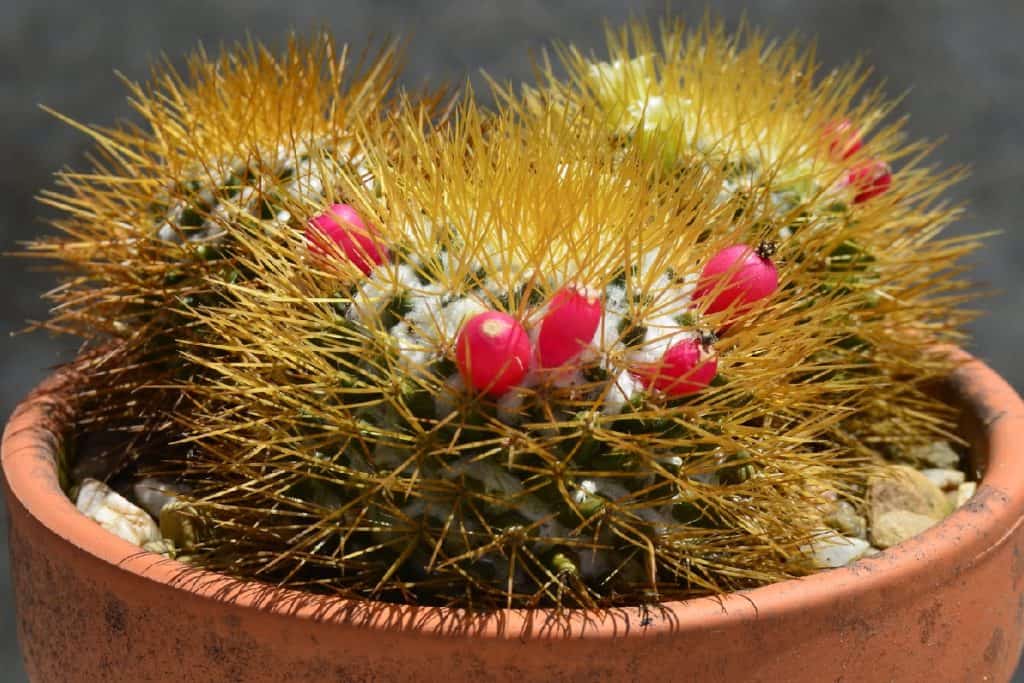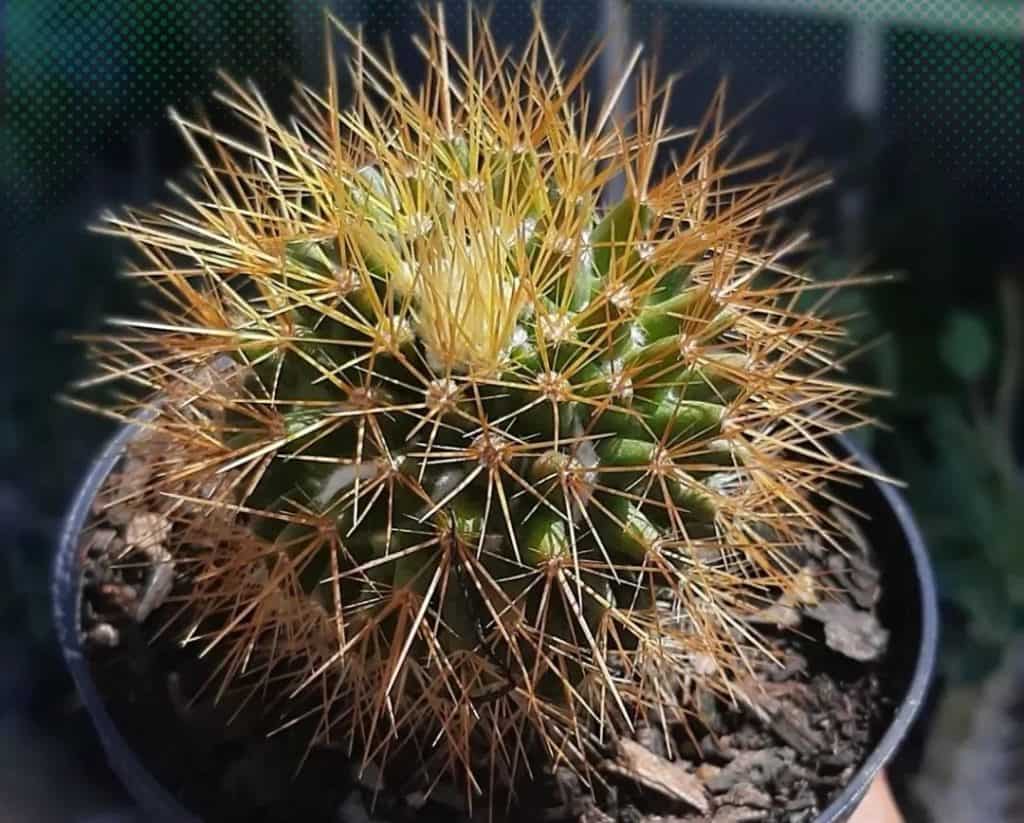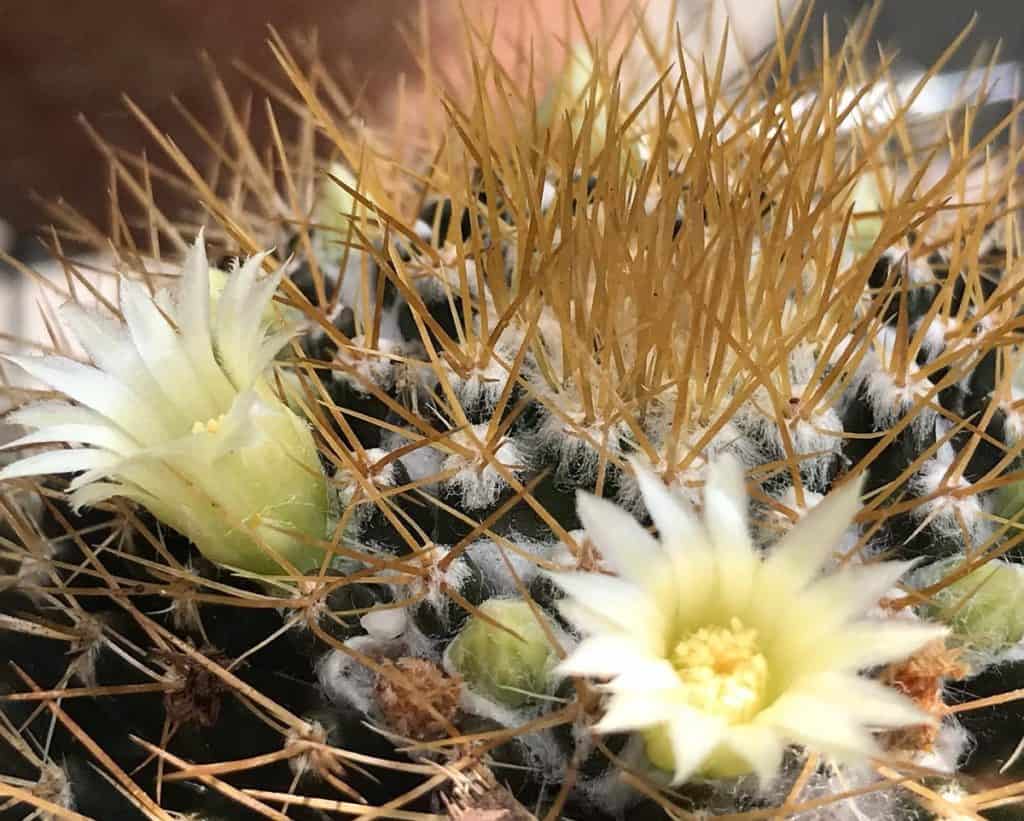Mammillaria nivosa: The Caribbean’s Woolly Nipple Cactus Sensation
If you’re on the hunt for one of the cutest, fuzziest cacti around, then look no further than the Mammillaria nivosa! This little guy, also known as the woolly nipple cactus, is an absolute charmer from the Caribbean islands. With its fuzzy white tips and sunny yellow flowers, it’s sure to steal your heart.
But don’t let its adorable looks fool you – this cactus is still a tough cookie that’s easy to care for, especially if you follow our simple tips. So keep reading to learn all about the fun-loving Mammillaria nivosa!

Contents
About Mammillaria nivosa
Native to tropical spots like Puerto Rico, Jamaica, and the Cayman Islands, the Mammillaria nivosa is a classic Caribbean cutie. It grows as a single round stem covered in fuzzy white growths called tubercles, which extend into spines. The bright yellow blooms add a sunny pop of color.
This cactus is a pretty fast grower that can form nice clumps in just a few years if given the right conditions. It offsets readily, so you may soon have a whole fuzzy cactus family on your hands!
Related Post:
39 Mammillaria Cactus Types and Care [With Pictures]
How to Care for Mammillaria nivosa
Light Needs
The woolly nipple cactus thrives in bright, direct sunlight. Indoors, set it up near a sunny window or use a grow light. You can slowly get it accustomed to more sun if needed.
Just be careful not to sunburn this sensitive sweetie by exposing it to intense rays for too long, especially when first introducing brighter light. A few hours of morning sun is ideal outdoors.
Water Wisdom
During the warm months, keep the soil lightly moist but never soaking wet. Water whenever the potting mix has fully dried out, about once every 1-2 weeks.
Come winter though, this fuzzy pal needs a rest period with little to no water while it’s dormant. Just give it a small sip if the soil is bone dry to prevent it from shriveling up.

Soil Savvy
Your Mammillaria nivosa wants a very well-draining potting mix. A cactus blend with ingredients like coarse sand or perlite works perfectly. You can also make your own by mixing in some compost or small pebbles for extra drainage.
No matter what, avoid dense, heavy soils that could retain too much moisture and cause rot. Quick-draining is key for keeping this fuzzy friend’s roots happy.
Fertilizer Facts
Feed your woolly nipple cactus every few weeks in spring and summer using a cactus fertilizer or balanced liquid fertilizer diluted to half strength. Those high in phosphorus are best for promoting strong root growth and beautiful blooms.
Lay off the fertilizer in fall and winter when growth slows down. An occasional very diluted solution is plenty during the cooler months.
Temperature and Humidity Needs
The woolly nipple cactus loves it warm and humid, just like its Caribbean homeland. During the growing season, aim for temperatures around 70-85°F. A little cool down to 50-60°F at night is fine.
Come winter, allow temps to drop to 50-65°F to let your fuzzy friend take a rest period. Just avoid freezing cold or sudden drafts.
On the humidity side, this Mammillaria prefers levels around 40-50%. Set the pot on a tray of wet pebbles or use a small humidifier to increase moisture in the air if needed. But don’t let the cactus itself get sopping wet.

Pest Patrol
The woolly tufts on this Mammillaria can sometimes host unwanted pests like mealybugs or spider mites. Check carefully and use an insecticidal soap, neem oil or blast of water to get rid of any critters.
Fungal issues like root rot can also occur from overwatering or poor drainage. Proper soil, excellent drainage, and avoiding wet feet are the best preventative measures.
Pruning Pride
The solitary nature of this cactus means pruning isn’t really necessary. You can snap off any dead or damaged growths if needed using clean shears or scissors.
Some growers also remove spent flowers and thin out the wool a bit for a neater appearance, but it’s not required.
Potting Prowess
Your Mammillaria nivosa will eventually need to be upgraded to a new, slightly larger pot to accommodate its increasing size and clumping growth habit.
Repot every 2-3 years in late spring, being very gentle when removing it from the old container. Use a well-draining cactus potting mix in the new home.
Let the plant rest for a week or two before watering after repotting to avoid stressing the roots.
Mammillaria nivosa Propagation Pointers
There are a few different ways to propagate and multiply your woolly nipple cactus collection:
From Seed:
- Sow Mammillaria nivosa seeds after the last frost in spring
- They germinate quickly in 7-14 days at temperatures between 70-81°F (21-27°C)
- Use a well-draining seed-starting mix and cover seeds lightly
- Keep soil moist but not soaked until seedlings emerge
From Offsets:
- Wait until offset pups have formed on the main plant, a few inches tall
- Detach offsets from the mother plant with a clean, sharp knife
- Allow the cut offsets to dry for a week or so until calloused
- Plant offsets in fresh cactus/succulent potting mix
- Water lightly only after roots have developed in a few weeks
From Cuttings:
- Use a sharp, sterilized blade to twist off a stem segment
- Allow the cutting to dry and callus over for 1-2 weeks
- Prepare a new pot with well-draining cactus potting mix
- Insert the cutting upright, allowing the calloused end to root
- Place in a warm, bright spot but avoid direct sun initially
- Water lightly only once the cutting has established roots
No matter which propagation method you choose, be sure to care for your new Mammillaria nivosa starts properly and you’ll have a plump little woolly cactus in no time!
